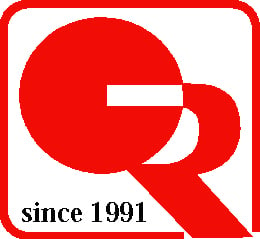Rising Tide
How the Iran-Israel Conflict is Driving Freight Rates Higher for European Importers of Chinese Foodstuffs
FREIGHTNEWS
6/17/20252 min read


As the June 2025 flare-up between Iran and Israel disrupts the Red Sea and Strait of Hormuz, container carriers are forced to reroute around Africa’s Cape of Good Hope. That adds 7–10 days to voyages from China to Europe and has driven spot rates sharply higher. Below you’ll find the latest sea-freight data from Drewry and Xeneta, an explanation of what’s behind the spikes, and practical steps you can take to protect your margins.
Drewry: World Container Index at a Four-Month High
Drewry’s World Container Index (WCI) tracks the global average spot rate for 40 ft containers across eight major trades. As of 12 June 2025, the WCI hit US $3 543 per FEU—up 59 percent over the past four weeks as vessels detour south and bunker‐surcharge premiums kick in.
Xeneta: Shanghai → North Europe Rates Surge
Xeneta’s real-time benchmarking shows the spot rate for a 40 ft box from Shanghai to Northwest Europe jumping 17 percent—from US $2 700 in mid-May to US $3 150 by mid-June—reflecting rerouting surcharges and capacity shifts away from Red Sea transits.
What’s Behind the Spike?
• Forced rerouting: Vessels avoiding the Red Sea and Strait of Hormuz add fuel-hungry days to each voyage.
• Bunker-surcharge premiums: Carriers pass on higher fuel and insurance costs tied to longer loops and war-risk zones.
• Increased lead-time risk: Longer transit times tie up containers in circulation, tightening equipment availability and lifting spot rates further.
Action Steps for European Importers
• Lock in multi-month deals—negotiate fixed-rate contracts now to hedge against further volatility.
• Diversify routing—blend direct China→Europe sailings with feeder services via the Northern Sea Route or Mediterranean transshipments.
• Boost safety stock—build 2–3 weeks of extra inventory in European warehouses to buffer against extended lead times.
• Monitor indices daily—subscribe to Drewry’s WCI alerts and Xeneta’s lane-specific reports to spot repricing opportunities or dips.
Bottom Line
If the Iran–Israel conflict persists, expect sea-freight from China to Europe to remain elevated—likely above US $3 500 per 40 ft container through Q3 2025. Early planning, blended routing and proactive contracting are your best defenses against these emerging cost pressures.
Notice any errors? Please help us rectify to get free sample!
White Label / Private Label Services
Welcome White Label / Private Label inquiries with full customization, control over Quality/Safety, and ensuring excellence in processing, packaging, and exporting of products.
Tel: +852 25172316
© 2024. All rights reserved. All information on this site is without any contractual, financial or otherwise any other liability. For binding information, please contact us and include your concerns / requirements in enquiry, quotation, contract and shipping documents.
5/Fl. Qualipak Tower, 122 Connaught Road West
Hong Kong.
China Business Ltd. T/A Orient Resources Company


Fax: +852 25178741
